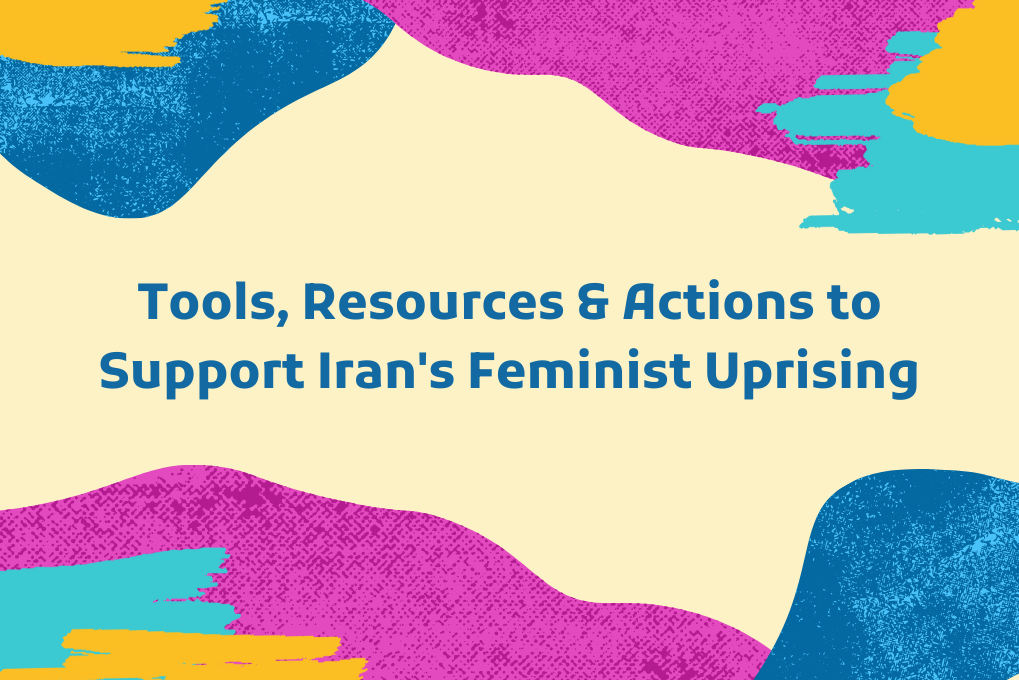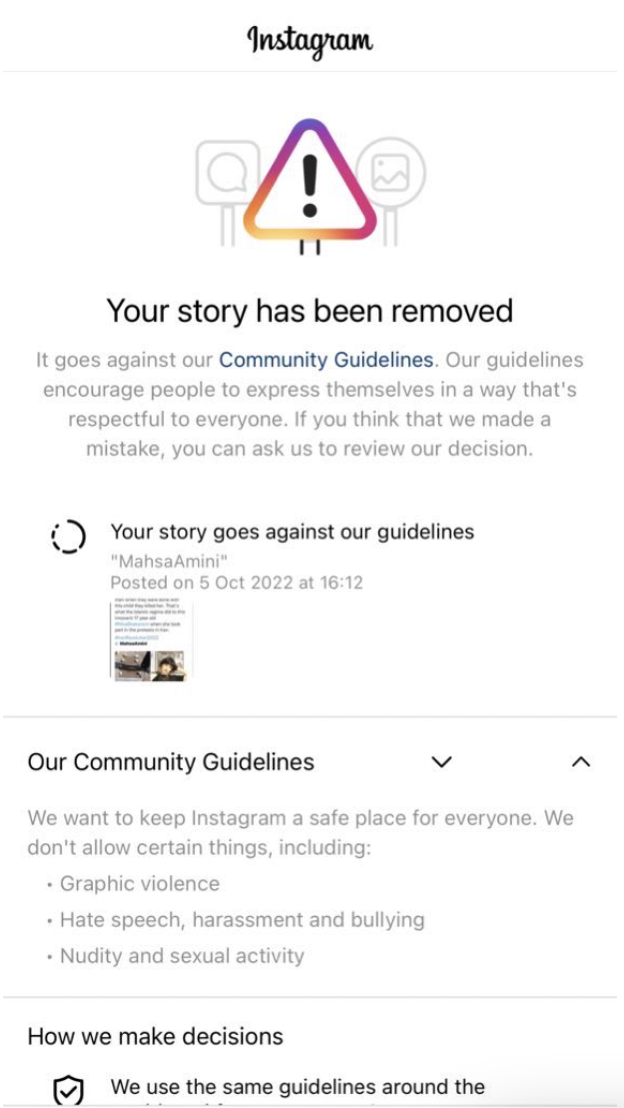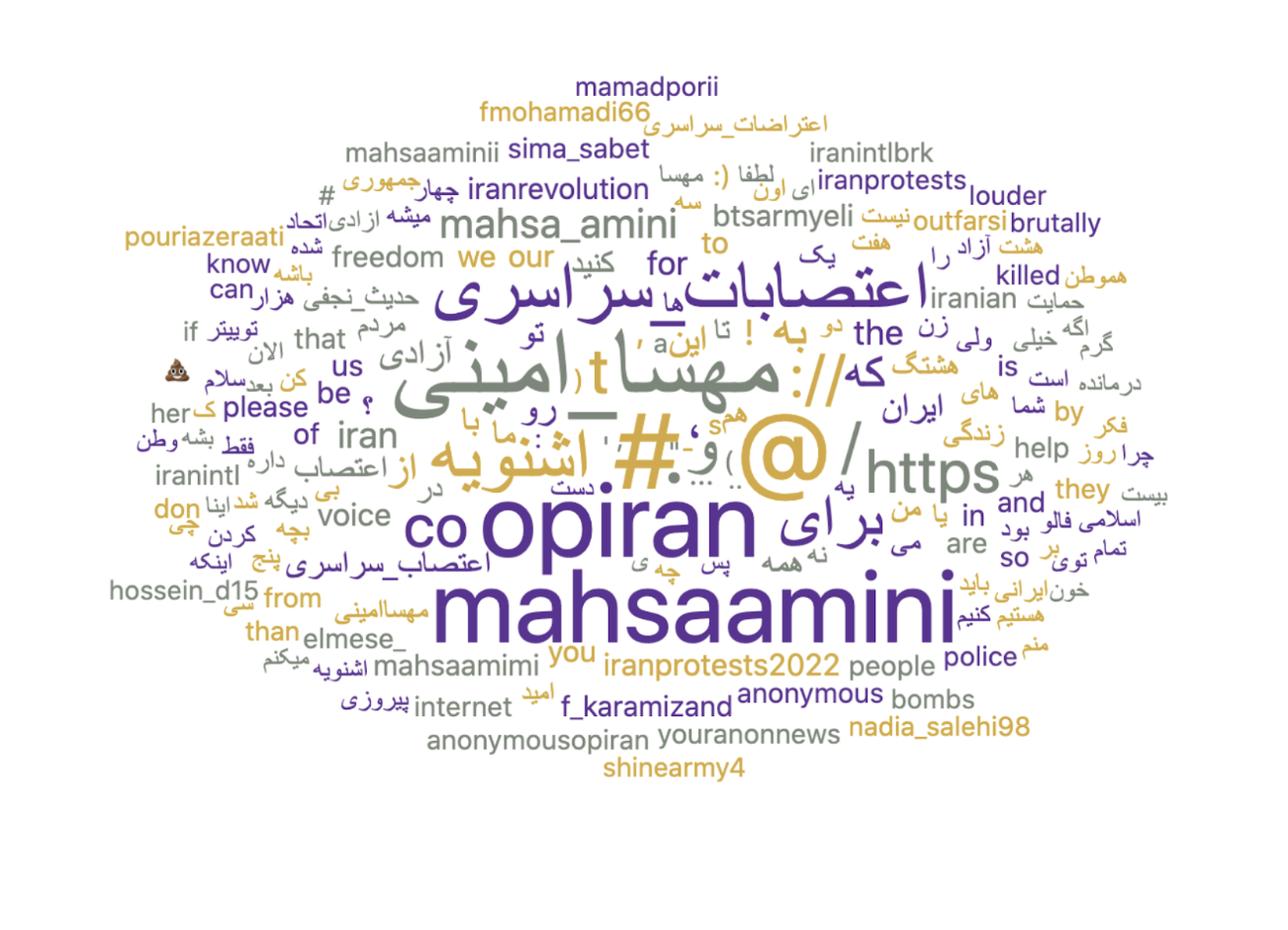Internet Freedom Tools, Resources & Actions to Support Iran's Feminist Uprising
This blogpost will be updated as we come across more tools and resources
On September 16, protests erupted in Iran following the death of Mahsa (Jina*) Amini, a 22-year-old Kurdish woman, three days after she was arrested and beaten by morality police in Tehran.
Several outlets are reporting the current counter revolution as the first to be lead by women.
The protests continue to this day, with hundreds of thousands of feminists from around the world joining in solidarity. The protests have evolved to include focus on not just police violence, but also the state of women’s rights and Iran’s draconian and restrictive government regulations.
In response to the protests, Iran has cut off internet access in parts of Tehran and Kurdistan, as well as blocked access to social media platforms such as Instagram and WhatsApp. Iran has a historical track record of implementing these tactics. In 2019, for example, Iran imposed a complete week-long blackout and Internet shutdown that resulted in 323 protesters being killed, violence of which the government tried to hide via the blackout as well. The repressive regime has also been kidnapping and arresting technologists who were vocal on internet censorship.
Find out Who is Helping Iranian Internet Users & How You Can Help the Feminist Uprising
A woman set fire to her headscarf during a protest in Tehran in September 2022. Source
This blog helps folks outside of Iran better understand how they can help the feminist uprising taking place. In addition, it documents the various initiatives or tools that are focusing on helping Iran Internet users (as well as the current uprising). Please note that we will update this blog post with new initiatives as we receive them. We hope that the list below will help folks identify gaps, so they can better understand where to invest their energy to best help.
What has been shut down?
A screenshot of a post that was removed on Instagram.
Multiple internet-monitoring organizations have been documenting the disruptions, including Kentik, Cloudflare, and the Open Observatory of Network Interference, which have been ongoing for several days in a row. However, they did not happen continuously, but rather following a curfew-style format, and where seemed to align with people’s times of protest and physical action.
It has been reported that mobile networks such as IranCell, MCI and Rightel have been shut down as well, in some instances lasting up to 12 hours.
According to OONI data, there has been a blocking of encrypted DNS, blocking of Whatsapp, Instagram, Google Play, Apple App Store, Skype and Linkedin.
According to Access Now, the shutdown, while general, appears to discriminate against users through a high level of tiered access, and users who text "Mahsa Amini" have had their messages not go through at all.
The sanctions are contributing to the general restricted internet access in Iran. As a result, the US Office of Foreign Assets Control (OFAC) has attempted to "ease" some of the sanctions related to technology and its use. Despite these efforts, there is a long list of tech companies whose services are impacted by the sanctions.
Social Media Censorship of Farsi Content is Making the Situation Worse
People hold signs and chant slogans outside the Iranian Consulate in Istanbul, Turkey, during a protest in September 2022 over the death of Iranian Mahsa Amini. Chris McGrath/Getty Images
Making the situation worse, companies continue to censor Iran-related information. In June, ARTICLE 19, Access Now, and CHRI urged Meta to develop better rapid response systems and reviewing processes that will not find a violation in Farsi content that often gets easily removed.
Following user reports of censorship of Iranian protest content, the Facebook Oversight Board announced that it was reviewing the company's decisions regarding specific posts. Several activists who have a large number of followers have reported that Meta has removed their posts that were covering the protests, including Saman Arbabi’s video which previously had 3.3M views.
Tools and Resources to Circumvent Censorship
A word cloud of most used terms and words in Iran on Twitter. Internet access is among those terms.
Paskoocheh.com
Iranian Internet users can check out Paskoocheh (Farsi for “alley way”), a marketplace that enables easy access to circumvention and privacy tools. Paskoocheh currently offers free Mullvad VPN Vouchers and Outline VPN access keys.
irandarkhamooshi.net
Filterbaan offers resources in Persian for internet freedom, specifically tools to prepare for internet shutdowns
Tor Project
The Tor website is now available in Farsi. You can also find the Circumventing Censorship with Tor guide in Farsi.
Google Play store is blocked in Iran, but you still can download Tor by using Tor's official Telegram bots/channels (https://t.me/TorProject)
@GetTor_Bot to download Tor Browser
@GetBridgesBot to get obfs4 bridges
@TorProjectSupportBot for help
Snowflake
Tor is asking that folks outside of Iran download and run Snowflake, which will help them better support folks in Iran bypass censorship.
Check out these digital posters with instructions as well as this detailed article by EFF on how to run Snowflake.
Signal
Signal is also asking people outside of Iran to run a proxy, which will help Iranian users reconnect to Signal.
Tunnelbear
Tunnelbear is providing 100GB of free VPN bandwidth monthly for users in Iran.
Proton VPN
Proton stated their support for the user community in Iran.
Download their free VPN here: https://protonvpn.com/support-form and here https://protonvpn.com/free-vpn/
GreatFire's AppMaker
GreatFire Appmaker is a free circumvention tool.
Instructions: You can create your own Android app to access blocked websites without a VPN on your mobile phone.
It's free and easy to use, only takes 1-2 minutes to create an app.
Name your app as you like.
Put an URL address of the website you create as an app in the "Home Page" box
Choose any image you want to use as an app icon to show on your mobile.
Click to create an app.
Download the APK file and install it on your mobile device.
You can share your app with others by simply sending them its QR code image, download page link, or APK file.
Tips:
You can also browse other blocked websites on the app. It works as a circumvention browser without using a VPN.
You can choose any names and logos for your app to disguise it. For instance, you create an app for "www.twitter.com" but name it as "workout" and use an image of "bike".
Latest Censorship Observations from Iran by WEPN
A series of interviews and investigations with help from people in Iran since the start of the current shutdown/filtering phase. The findings are detailed in this Google Doc: https://go.we-pn.com/state22
This document is being updated "live".
Data
OONI's report documenting the latest censorship events in Iran amid the ongoing protests
IODA Signals for Iran
Advocacy
More than 162 feminist and human rights organization have signed
a letter in solidarity with the courageous women in Iran who have
taken to the streets to peacefully protest the death in custody of
Mahsa (Jhina) Amini and to demand their bodily rights.






